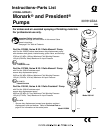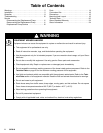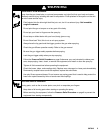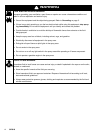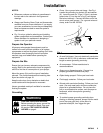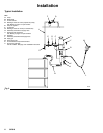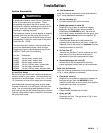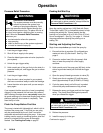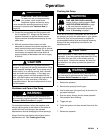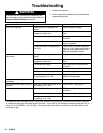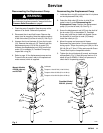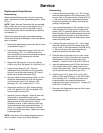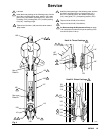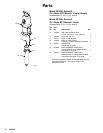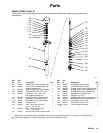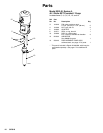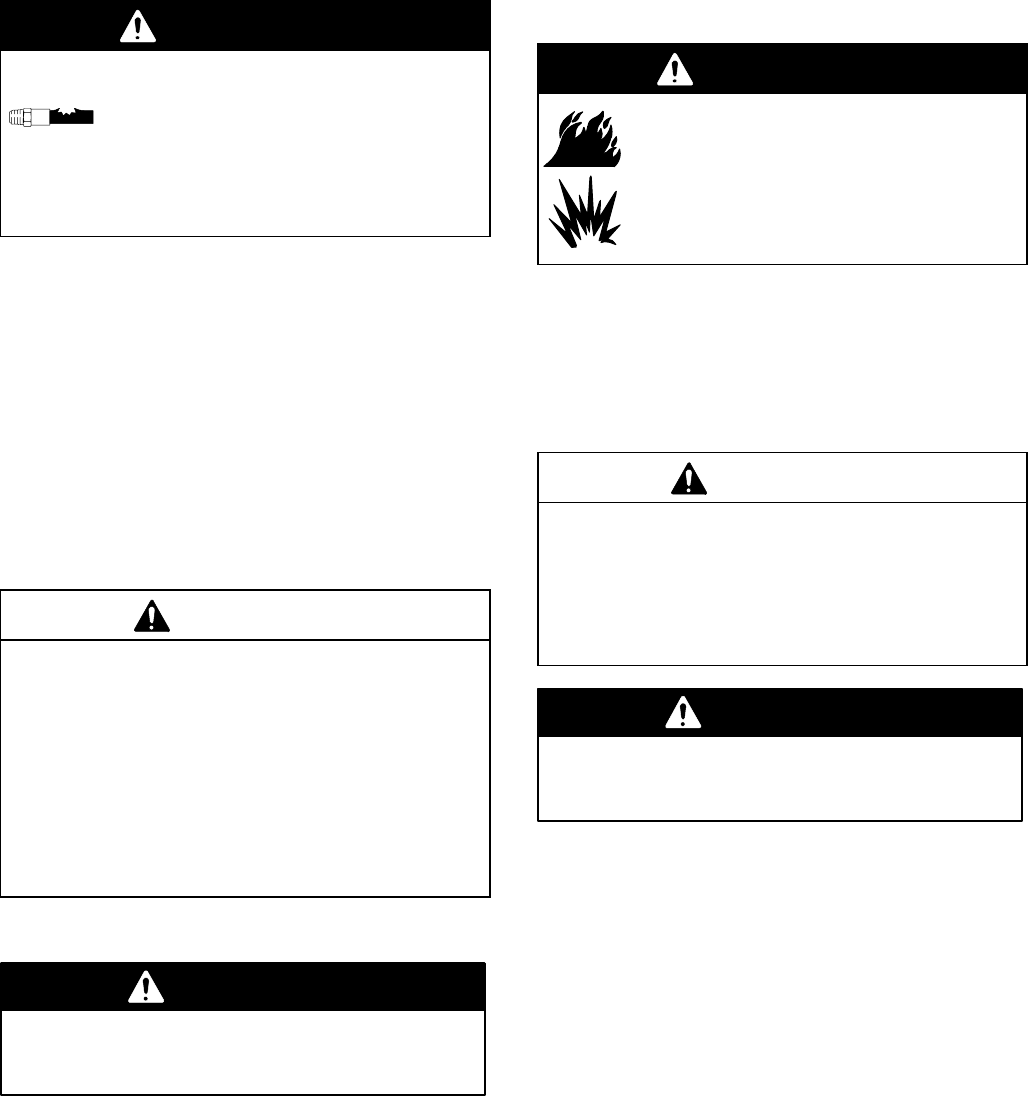
307619 9
Operation
WARNING
COMPONENT RUPTURE HAZARD
To reduce the risk of overpressurizing
your system, which could cause
component rupture and serious injury,
never exceed the specified maximum air input
pressure to the pump (see Technical Data on
page 20).
10. Control the pump speed and fluid pressure with
the air regulator (E). Always use the lowest air
pressure necessary to get the desired results.
Higher pressure causes premature spray tip and
pump wear.
11. With the pump and lines primed, and with
adequate air pressure and volume supplied, the
pump starts and stops as the spray gun is opened
and closed. In a circulating system, the pump runs
continuously and speeds up or slows down as
supply increases or decreases until the air supply
is shut off.
CAUTION
Never allow the pump to run dry of the fluid being
pumped. A dry pump will quickly accelerate to a high
speed, possibly damaging itself. If your pump accel-
erates quickly, or is running too fast, stop it immedi-
ately and check the fluid supply. If the supply con-
tainer is empty and air has been pumped into the
lines, refill the container and prime the pump and the
lines with fluid, or flush and leave it filled with a
compatible solvent. Be sure to eliminate all air from
the fluid system.
Shutdown and Care of the Pump
WARNING
To reduce the risk of serious injury whenever you
are instructed to relieve pressure, always follow the
Pressure Relief Procedure on page 8.
For overnight shutdown, relieve the pressure, and
always stop the pump at the bottom of the stroke to
prevent the fluid from drying on the exposed
displacement rod and damaging the throat packings.
Always flush the pump before the fluid dries on the
displacement rod. See Flushing the Pump.
Flushing the Pump
WARNING
FIRE AND EXPLOSION HAZARD
Before flushing, read the section FIRE
AND EXPLOSION HAZARD on page
4. Be sure the entire system and
flushing pails are properly grounded.
Refer to Grounding on page 5.
Flush with a fluid that is compatible with the fluid you
are pumping and with the wetted parts in your system.
Check with your fluid manufacturer or supplier for
recommended flushing fluids and flushing frequency.
Always flush the pump before fluid dries on the
displacement rod.
CAUTION
Never leave water or water-base fluid in the pump
overnight. If you are pumping water-base fluid, flush
with water first, then with a rust inhibitor such as
mineral spirits. Relieve the pressure, but leave the
rust inhibitor in the pump to protect the parts from
corrosion.
WARNING
To reduce the risk of serious injury whenever you
are instructed to relieve pressure, always follow the
Pressure Relief Procedure on page 8.
1. Relieve the pressure.
2. Remove the spray tip from the gun.
3. Hold a metal part of the gun firmly to the side of a
grounded metal pail.
4. Start the pump. Always use the lowest possible
fluid pressure when flushing.
5. Trigger the gun.
6. Flush the system until clear solvent flows from the
gun.
7. Relieve the pressure.



